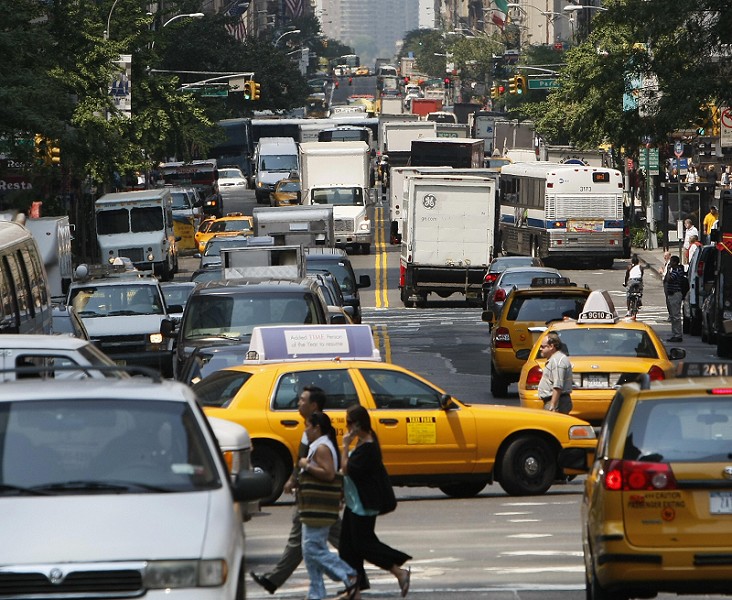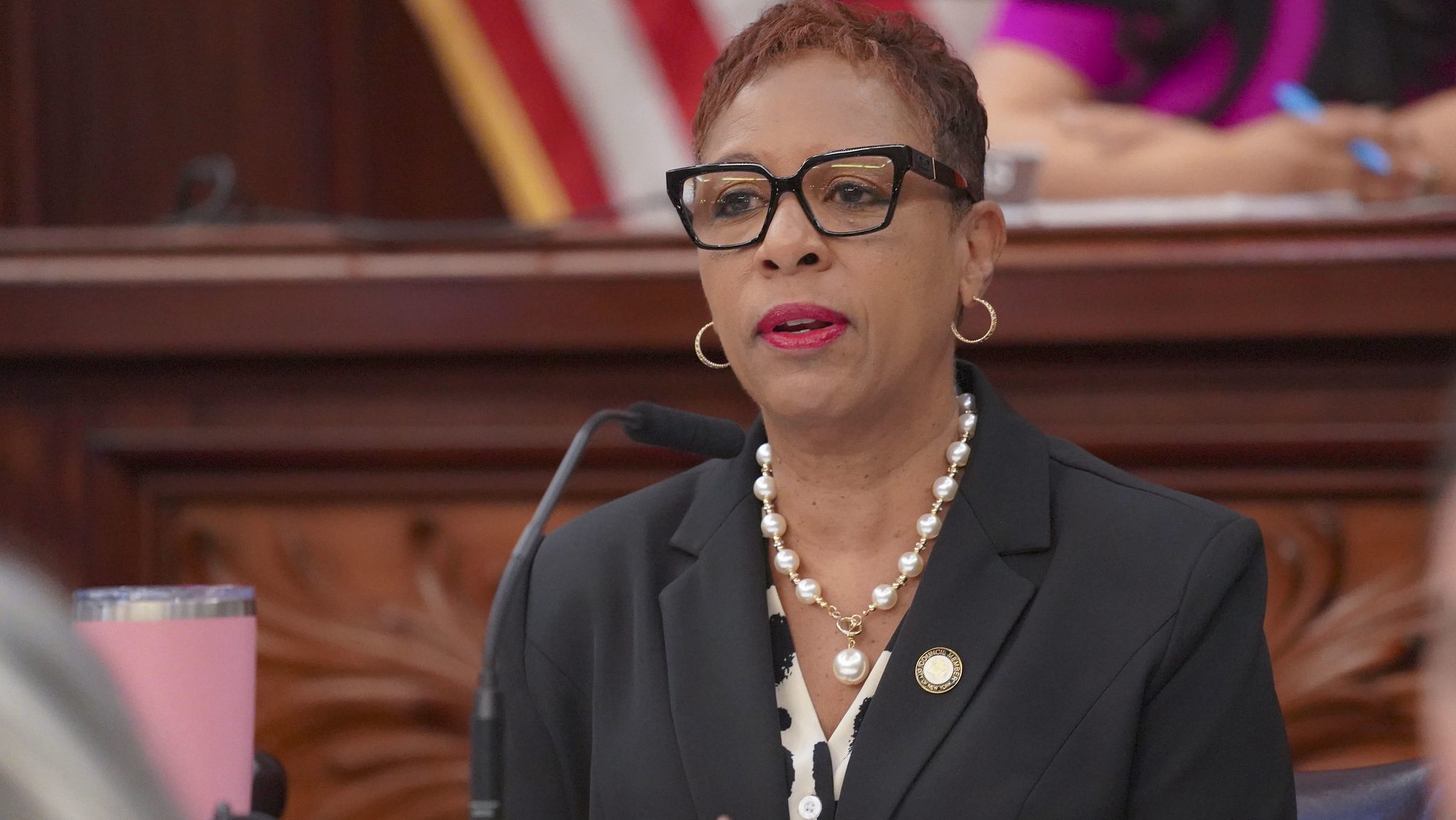Look out, Downtown. Manhattan Community Board 1 wants to propel your streets into the 21st century.
During March, a “Fix Canal Street Now” resolution that probably entails taking space from drivers was unanimously adopted by CB1’s transportation committee and overwhelmingly passed by the full board (see p. 29 of this PDF). Now I’ve been invited to kick off the transportation committee’s April 7 virtual meeting with a discussion of congestion pricing’s benefits for CB1 – the area comprising the Financial District, Battery Park City, Tribeca and the zone around the Brooklyn Bridge and City Hall, where I live and work.
My first slides will show how much Lower Manhattan stood to gain from congestion pricing when it started up next year, according to my pre-COVID-19 modeling. The number of cars and trucks pouring into downtown streets from the Brooklyn, Manhattan and Williamsburg bridges would shrink by 25 percent. Everything about motor traffic that everyone hates – the noise, menace and fumes – would lessen considerably. Buses would run better with less traffic, as the 14th Street busway has been demonstrating for months. And the $12 billion in capital funds earmarked for subways would speed replacement of ancient signals, which would add service, ease crowding and cut delays.

The cost to downtown residents? My best guess was a tab of around $6.50 for each one-way car trip between the neighborhood and Manhattan above 60th Street, or over an East River bridge, on most weekday and some weekend hours, but reduced to $2 at other times. According to my calculations, which you can check in my publicly available BTA spreadsheet model (9 MB Excel download), that toll combo would generate the state-mandated billion a year in revenue, but only if downtown drivers were subject to the same tolls as everyone else. Exempting them en masse would dilute the take, requiring that other drivers pay more and setting off a cascade that would doom implementation, as I wrote here a month ago.
Well, to paraphrase The Lovin’ Spoonful, right now it’s a different world. Post-pandemic, will congestion pricing still be a good idea? Yes. Can we roll out congestion pricing with the same certainty as to revenue gained and gridlock lost that we had before? No, but that shouldn’t matter, because all four bedrock conditions that justified congestion pricing in the first place almost certainly will remain.
Foremost among those conditions is that the subways need revenue — now as much as ever. Even if rapid transit’s mode share ends up slipping somewhat, we’ll still want the new signaling technology to usher in higher service frequencies so that riders can maintain a modicum of social distancing on platforms, stairs and trains. And if for awhile some of the congestion revenue has to go to shore up New York City Transit’s operating budget, as new emergency legislation permits, that’s a far better outcome than raising fares or cutting service.
A second reality is that driving a motor vehicle into or within the tolled area — the Manhattan Central Business District — massively steals time, calm and wellness from everyone else, including other drivers. While car and truck “externality costs” are obviously way down now, they’ll return with a vengeance once economic activity recovers. Indeed, it won’t take much of an exodus from subways to vehicles to send those costs further through the roof.
Third, the congestion toll levied on drivers will remain a small fraction of the congestion costs inflicted by those same drivers. Not long ago, in pre-COVID conditions, I calculated that a typical round trip by car into and back out of the CBD during peak weekday hours (6 a.m.-8 p.m.) imposes $93 of total delay costs on other people in vehicles (drivers, truckers, users of cabs and Ubers, bus passengers; see bar graph above). Matched against that benchmark, a $13 round-trip congestion charge — equal to one-seventh of the congestion cost — is small potatoes.
The fourth and last congestion pricing constant is the enduring economic value (“utility,” in economic parlance) of the activities — work, pleasure, consultations, and so forth — that bring people to CBD destinations. Post-virus, these activities will still be attractive enough that most car trips to Manhattan — around 85 percent — will continue in the face of the toll. That is what will generate the desperately needed revenues to finance the investments to modernize transit, while the 15 percent of “disappeared” trips generate congestion pricing’s other huge benefit: double-digit improvements in CBD traffic speeds.
I’m going to crawl out on a bit of a limb and say that the persistence of these conditions will overcome any calls to shelve congestion pricing on grounds that New Yorkers are suffering enough, or that our city and region will be too fragile economically and socially to take on congestion pricing. If anything, the equation runs the other way: especially in dire times, New York can’t afford to put off congestion pricing.






